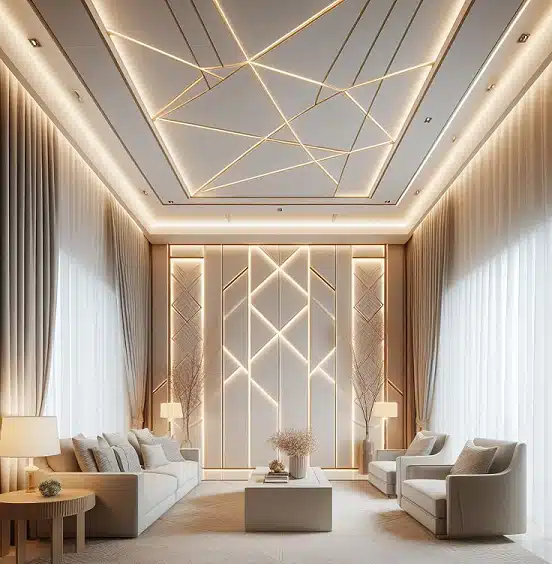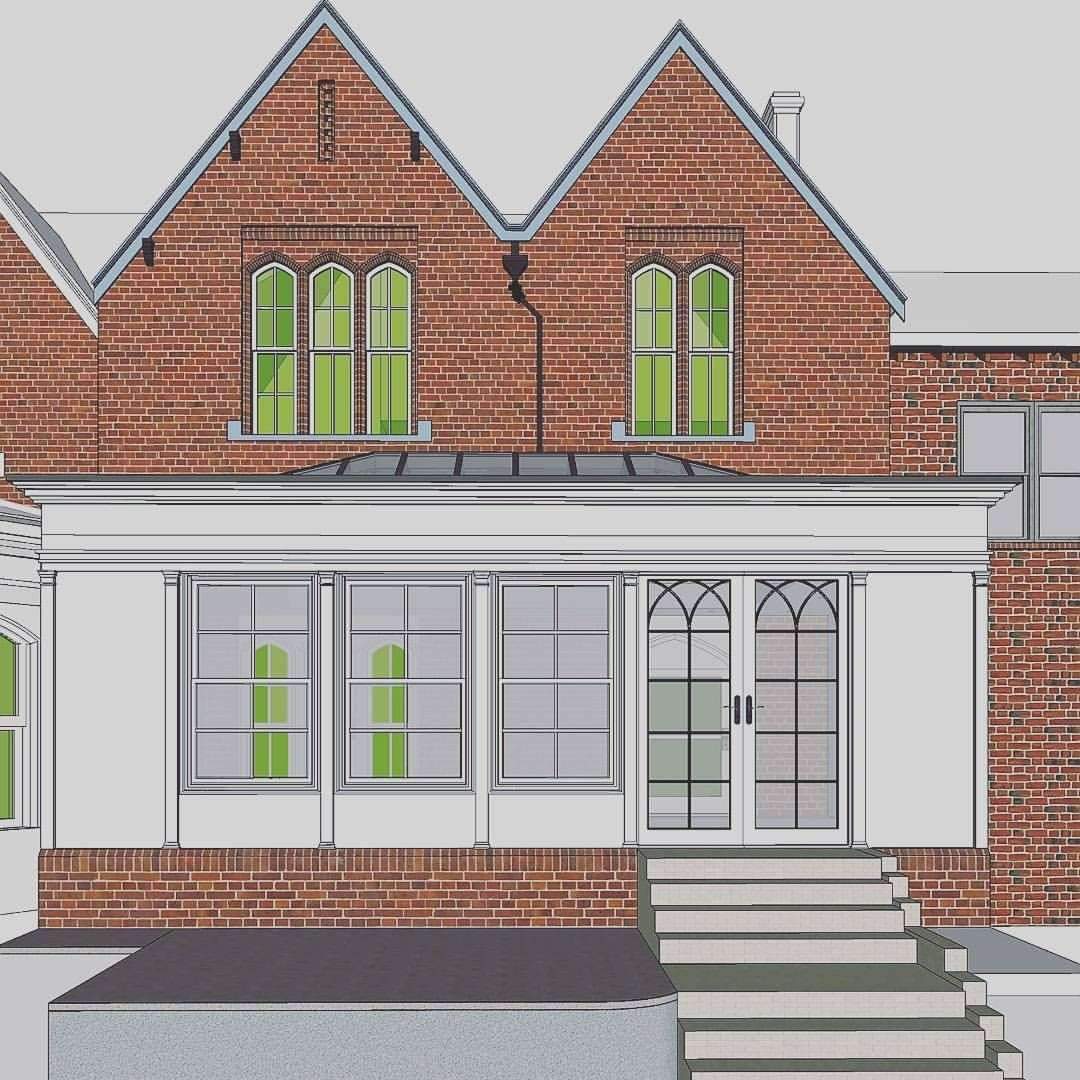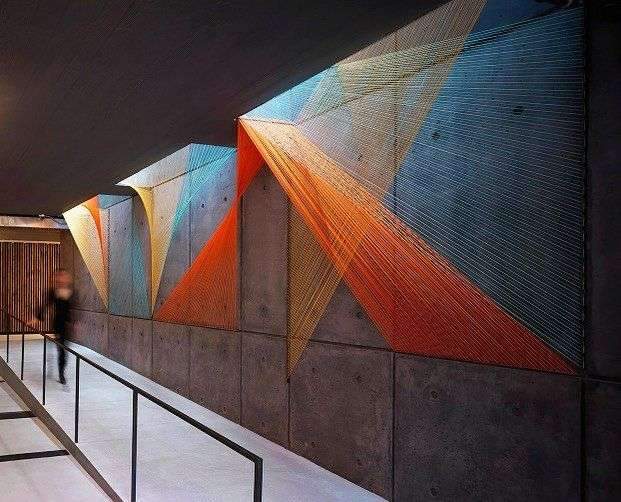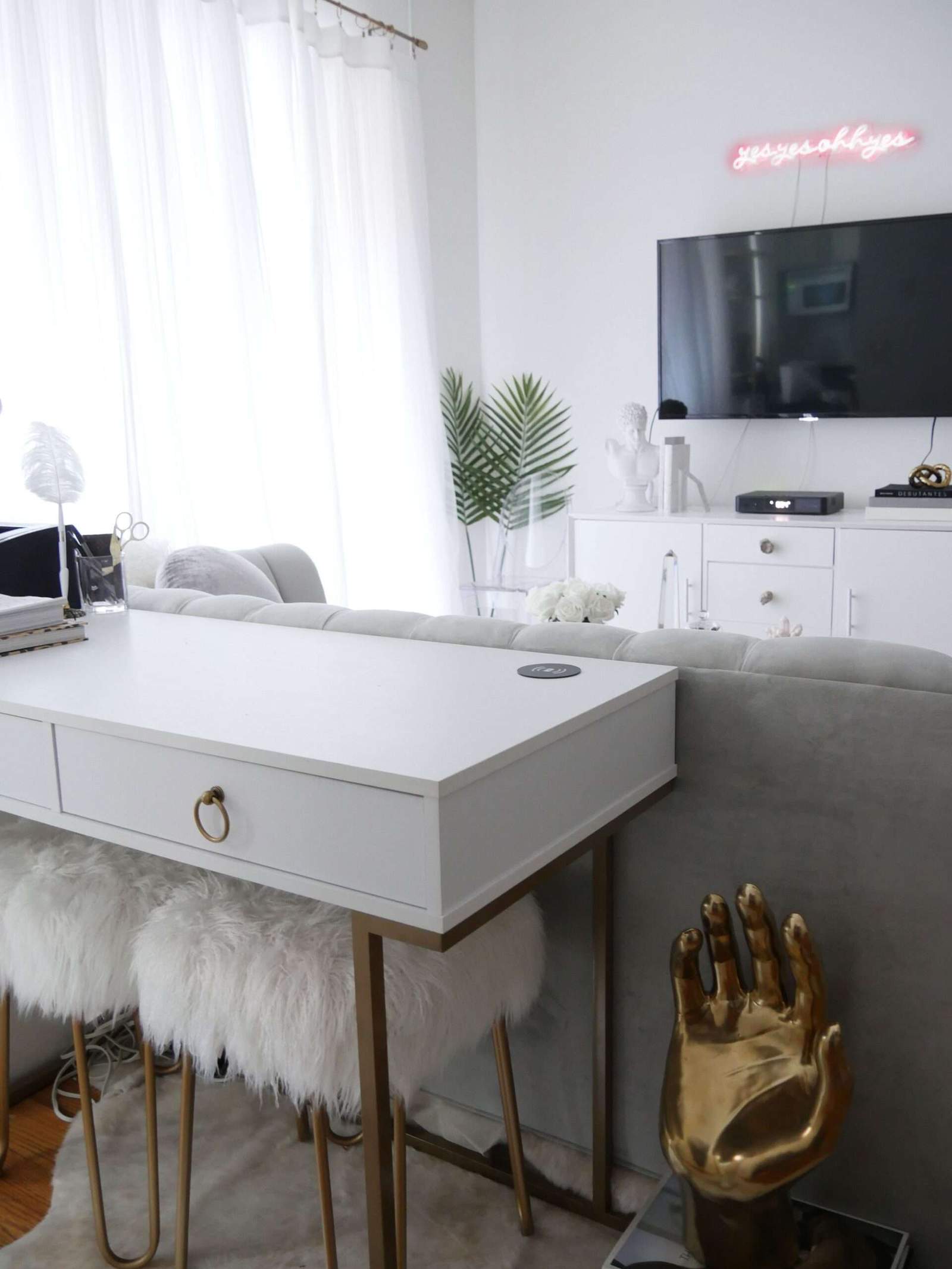Ceilings and Their Materials in Interior Design: A Practical Guide
Ceilings are more than just structural covers. They help shape the character, function, and comfort of any interior space. This article explores the most common ceiling types, the materials used to build them, and the key differences between regular and suspended ceilings. It also includes a simple comparison between traditional plaster and modern drywall systems. By understanding each option, homeowners and designers can make better decisions based on use, budget, and the surrounding environment.
Key Materials Used in Ceilings
1. Wood
Designers often use wood in ceiling designs to create a warm, natural look.
They install it as planks, panels, or decorative beams over existing concrete or gypsum ceilings.
Main Features of Wood Ceilings:
- Offers a natural look.
- Good sound insulation.
- Requires regular maintenance to prevent damage from moisture or pests.
- Higher cost compared to other materials.
2. Plaster vs. Gypsum Board (Drywall)
Plaster has been used for centuries for decorative ceilings. Today, gypsum board (also called drywall) has become a popular alternative for faster and more affordable installation.
| Feature | Traditional Plaster | Gypsum Board (Drywall) |
|---|---|---|
| Application | Manually applied in layers | Pre-made sheets mounted on frames |
| Time | Slow drying and installation | Quick to install and finish |
| Cost | More expensive | Cost-effective |
| Finish | Allows detailed decoration | Usually painted or wallpapered |

3. Metal
Designers install metal ceilings in commercial spaces, offices, and high‑moisture areas. They integrate them into suspended ceiling systems to meet functional needs and enhance the room’s appearance.
Common metals:
- Galvanized steel
- Aluminum
Key Benefits:
- Moisture-resistant
- Durable and low-maintenance
- Suitable for large open spaces
4. Ceiling Tiles
Ceiling tiles come in different materials like plastic, vinyl, fiberglass, gypsum, and cork. They are usually used in suspended ceiling systems.
Advantages:
- Lightweight
- Easy to replace
- Improve sound quality and reduce echo
- Available in various colors and textures
Suspended Ceilings: Types and Uses
A suspended ceiling (also known as a false ceiling or drop ceiling) is a secondary ceiling installed below the original one.Designers commonly install suspended ceilings to hide wiring, air ducts, and lighting systems while boosting the room’s acoustics and insulation.
Common Types of Suspended Ceilings
| Ceiling Type | Materials Used | Main Benefits |
|---|---|---|
| Gypsum Board Ceiling | Lightweight gypsum panels | Fire resistance, thermal insulation |
| Fiber Ceiling | Synthetic or natural fibers | Low cost, good acoustic performance |
| Wooden Ceiling | Wood planks or panels | Natural appearance, high cost |
| Glass Ceiling | Clear or frosted glass | Modern look, allows natural light |
| Metal Ceiling | Aluminum or steel panels | Durable, easy to clean |
| Fabric/Stretch Ceiling | Stretchable PVC or cloth | Easy to install, temporary use |

Note on Plaster of Paris (POP)
Plaster of Paris is a type of fast-setting gypsum product. It provides a smooth finish and is often used in decorative ceilings. However, it should be used in dry environments to avoid moisture damage.
No official quote is currently available for Plaster of Paris in this context.
Choosing the Right Ceiling for Your Space
When selecting a ceiling material or type, it’s important to consider the following:
- Function: Is the ceiling purely decorative, or does it need to improve insulation or sound control?
- Budget: Some materials (like wood or glass) cost more to install and maintain.
- Environment: Moisture, temperature, and lighting conditions all affect material durability.
- Maintenance: Some materials require regular cleaning or repair, while others are more hands-off.
Frequently Asked Questions (FAQ)
1. What is the difference between a regular and suspended ceiling?
A regular ceiling is the main structural ceiling of a building. A suspended ceiling is a secondary layer installed beneath it to improve function or aesthetics.
2. Which ceiling material is best for soundproofing?
Fiberglass and specialized acoustic ceiling tiles offer the best sound insulation.
3. Can gypsum ceilings be used in bathrooms?
Only if moisture-resistant gypsum panels are used, otherwise regular gypsum is not suitable for high-humidity areas.
4. Are glass ceilings safe?
Yes, if installed with safety glass and properly supported by a secure frame.

Summary Table
| Material/Type | Primary Function | Key Advantages |
|---|---|---|
| Wood | Aesthetic, sound insulation | Natural look, high cost, needs care |
| Traditional Plaster | Decorative ceiling finish | Smooth surface, slow to apply |
| Gypsum Board | Affordable ceiling panels | Quick, easy to install, low cost |
| Metal | Durable and moisture-resistant | Ideal for commercial spaces |
| Ceiling Tiles | Lightweight decorative covering | Replaceable, improves acoustics |
| Fiber | Budget ceiling option | Soundproofing, various finishes |
| Glass | Modern transparent ceiling | Brings in natural light |
| Fabric/Stretch | Temporary or visual effect ceiling | Easy to install, not durable long-term |
By understanding the roles and features of different ceiling materials, you can create spaces that meet both practical needs and design goals. Whether you’re building a home or planning a commercial project, ceiling choices play a major role in how the interior feels and functions.
In modern interior design, ceilings have evolved beyond their structural role to become vital elements of spatial aesthetics and acoustic performance. Globally, the market for ceiling materials is projected to reach USD 130 billion by 2030, driven by innovations in lightweight composites, acoustic insulation, and sustainable finishes. Designers today choose from a wide array of materials—gypsum boards for smooth, paintable surfaces; metal tiles for durability and reflectivity in commercial settings; exposed concrete for a brutalist touch; and timber slats to introduce warmth and biophilic character. For instance, gypsum-based false ceilings dominate residential interiors due to their fire resistance and ease of installation, while acoustic tiles made from mineral fiber or PET are popular in offices and educational spaces to reduce noise levels by up to 60%. Ceilings also offer a canvas for integrated lighting systems, concealed HVAC units, and creative coffered or vaulted designs that alter perceived room height and atmosphere. Regional styles play a role too—coffered ceilings are a hallmark of Mediterranean luxury, while fabric-draped ceilings remain a staple in South Asian wedding halls. As interior design embraces multi-functionality and sustainable sourcing, ceiling materials are now selected not just for looks, but for their thermal, acoustic, and environmental performance, redefining how we experience the “fifth wall.”







